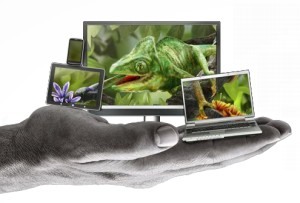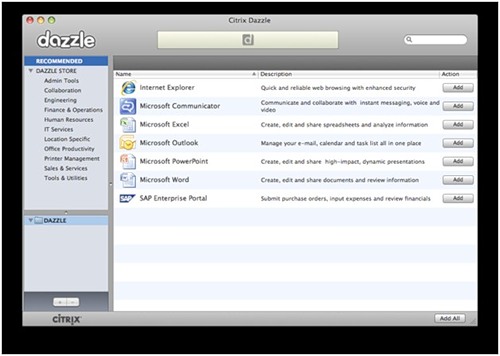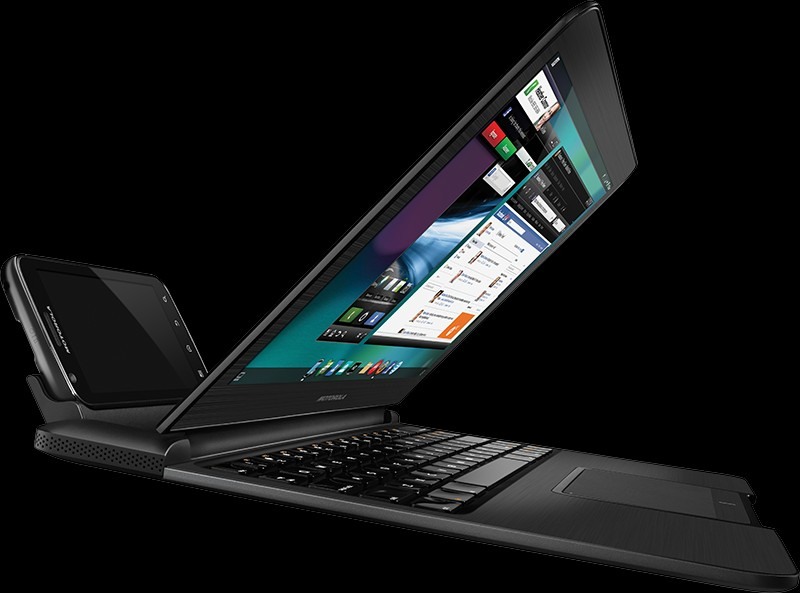Bring your own computer to work
 Citrix was not the first company to start experimenting with the BYOC program (Bring Your Own Computer), but its experience was one of the most successful. The XenApp application delivery system and other Citrix solutions are ideally suited for such a solution: it is much easier to manage a fleet of disparate equipment with them, and the laptop manufacturer and even the type of operating system are no longer important.
Citrix was not the first company to start experimenting with the BYOC program (Bring Your Own Computer), but its experience was one of the most successful. The XenApp application delivery system and other Citrix solutions are ideally suited for such a solution: it is much easier to manage a fleet of disparate equipment with them, and the laptop manufacturer and even the type of operating system are no longer important.Everyone working in the office (especially the IT specialists of the companies) are perfectly familiar with the routine associated with entering a new workplace. You get a desktop or laptop, a specific set of work programs, access to e-mail, and more. To all this, a set of rules and restrictions are added, including the inability to install own software, the need to use an authorization scheme in the corporate network. In this article I will talk about the successful implementation of BYOC in the Citrix office, as well as a possible development of such an approach to equipping employees: in the future, employees will be able to be equipped not so much with laptops, but with tablets. Or smartphones: if the pocket device allows you to perform all work tasks, why not use it.
In any case, the BYOC program gives employees the right to choose, and this is the most interesting. Read about the conditions on which Citrix employees buy their own laptops at the company's expense, read under the cat.
')
Who is responsible for the iron?
The BYOC pilot program was conducted at Citrix's US office in 2008, and has since been successfully expanded to all of the company's global presence. The author of this program, Vice-President of Citrix Paul Martin, spoke about the results of its implementation at last year’s Citrix Synergy conference. You can watch the video of this speech here . Paul Martin points out that this is not a universal solution. For example, some of the company's employees use stationary computers, and the offer does not apply to them. However, most use laptops, and it is on them that solution is targeted.
The standard approach to the transfer of employee "iron" is known to all. You are provided with a corporate laptop, not necessarily a new one, and not always meeting your expectations. Often you have to use your own laptop as well, because in a working one there is not enough performance, or the limitations of the installed OS do not allow using your own programs. The idea of BYOC is precisely to give employees more freedom. Want a fancy game machine? MacBook? Powerful Linux laptop on board? No problems. An important advantage of Citrix is access to its own software development, which removes dependence on a specific architecture and OS type. A standard Citrix Receiver client that provides access to virtual OS or virtual applications exists in versions for Windows, Mac OS, and Linux.
Employees of the US office were offered the following conditions. They had to return the now used laptop to their manager. They were given $ 2,100 to buy their own laptop - any model of their choice. This amount was not taken from the ceiling: Paul Martin decided that for three years about $ 2600-2700 is spent on each employee: this cost includes the purchase, maintenance, repair of computers, and so on. By providing a 20 percent savings on such costs, Citrix shifts iron care to employees. Hence the important requirement: the laptop must have a three-year warranty. If there is no such guarantee, you need to purchase extended warranty service from the manufacturer. Further, any damage to the laptop - the problem of its owner. In the event of a failure or loss of a laptop, the employee will of course be provided with a temporary replacement (just from the pool of returned corporate laptops), but the employee must communicate with the guarantee workshop. If an employee who has used the program leaves the company without having worked for three years, a portion of the funds for the laptop is deducted from his salary, which he retains in any case.
Who is responsible for the software?
Another requirement of the program is the mandatory installation on the laptop antivirus. All enterprise applications are “delivered” to a laptop using Citrix proprietary solutions. For the employees participating in the BYOC program, a corporate website was created, which contains simple instructions for setting up a laptop. In fact, setting up a corporate environment comes down to downloading the Citrix Receiver client. It provides a secure connection to the corporate network (SSL VPN, and this scheme works even when working in the office), and installs plug-ins to work with corporate programs and documents. Among them - Citrix XenVault to create an encrypted document repository on a laptop (for more information about it - in this material ), as well as Citrix Dazzle to configure the system for delivering applications to a laptop. Citrix Dazzle looks like this:

Through the program interface, applications are selected that can be added to the standard list of programs of your operating system. Depending on the type of program, you can work with it both when connected to the Internet and offline. Unlike hardware, which the employee is now fully responsible for, Citrix provides support for its own software.
results
After a test drive of the BYOC program in the company's US office, it was distributed to Citrix offices around the world. In his speech, Paul Martin noted that about 20% of the company's employees used the program in total. As I said above, some employees work on desktops. Citrix engineers sometimes require very powerful machines that do not fit into the budget: they also get a laptop "from the company." And all the others are actively using the BYOC program: it is also used in the Moscow office of Citrix. Paul Martin noted that 46% of participants in the program in the United States bought an Apple laptop. The rest often acquired powerful models worth 3-4 thousand dollars. Employees motivated their decision by always dreaming of just such a model, and regarded the conditions of the BYOC program as providing a big discount on the purchase of an expensive laptop. In general, despite initial questions and doubts, Citrix reacted very positively to the program: for many, it allowed them to acquire the perfect work tool, which they had only dreamed of before. At the same time, Citrix solutions allow you to use a laptop without any restrictions: corporate security rules are valid only when running corporate applications.
What's next?
It is possible that in the near future BYOC will have to correct one letter in the abbreviation: instead of Computer, it would be more appropriate to use Device. According to Forrester Research, by 2015, 59 million tablets will be sold in the United States. Most recently, Motorola introduced a “laptop-like” docking station for its own smartphone, which has enough power to run almost any application.

Citrix technologies allow working with corporate software from virtually any device (we talked about the example of working with Windows applications on the iPad ), so this scenario, when the laptop is not necessary for full-fledged work, is not excluded. In any case, Citrix experience with the BYOC program showed that employees work more efficiently when they are allowed to choose a work tool to their taste. What do you think about such a program? Would you agree to the introduction of such a system in your office? Or perhaps you already use your own laptop for work? Let's discuss!
Source: https://habr.com/ru/post/116060/
All Articles